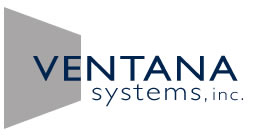Market Impact of Generic Drugs
This topic is to give an example of Ventana technical success in: (a) tackling an important and difficult pharma prediction problem, and (b) suggesting that this success can be replicated because the causal drivers of generic sales growth tend to be same across therapy areas and countries.
In 2001, Ventana was asked to predict the sales performance of a generic drug after the patent on it’s branded equivalent expired. One advantage of Ventana modeling is a better understanding of the root causes of market dynamics. This allows the models to make contingent predictions of unprecedented or unusual market behavior despite using seemingly ordinary assumptions about future market evolution. One example of this was the predication that the generic form (lovastatin) of a mediocre branded cholesterol-lowering drug (Mevacor) would become far more popular in the United States than it was when it was the market-leading drug a decade earlier. Generic drugs are significantly cheaper than branded drugs. Yet, conventional wisdom in the pharmaceutical industry at the time was that the availability of superior branded drugs as well as intense promotion to both physicians and patients virtually guaranteed that generics would at best equal the sales of their branded form when it went off patent. And most likely, generic sales would quickly fade away over time to almost nothing.
The Ventana simulation of the market predicted that sales of the generic would grow steadily after launch instead of dying away, and this forecast proved correct. Interestingly, however, conventional wisdom was so entrenched in peoples’ minds that for a few years after the forecast marketers were still finding reasons that the lovastatin example was an extremely rare case that would not be repeated. Consequently, when later Ventana models of three other pharmaceutical markets predicted similar behavior correctly, the models got credit for surprising predictions that proved correct.
Correct forecasts of sales for new products are usually “surprising,” but these examples only reflect the value of identifying the true causal drivers of market dynamics instead of basing forecasts on simple smoothing of historical sales, static correlations among historical variables, reasoning by analogy, and/or prescriptive models asserting the existence of a simple mathematical formula that explains how innovation always spreads across a customer base. In the pharmaceutical examples cited here, the innovation was not just in the drugs on the market but the managed care system as well. This innovation had been going on for decades, but in the case of managed care, it proceeded as a “trial and error” process that took a while to mature. Ventana’s success in predicting sales came from looking at the business system broadly and recognizing the interaction of innovation in multiple areas.
In 2007-2008 Ventana had an opportunity to re-analyze the marketing issues in play after drug patent expiration across six countries and seven therapy areas from 1995-2007 (27 drug classes; 308 molecules; and 260 generic events). We see the issues and their analysis much the way we saw them in 2001. Facts change, markets evolve and data accumulates; but the necessary model concepts and scope remain essentially the same. The dominant part of the effort required to predict the impact of generic drugs has become the collection, qualification and processing of the ever-growing volume of conflicting data.
